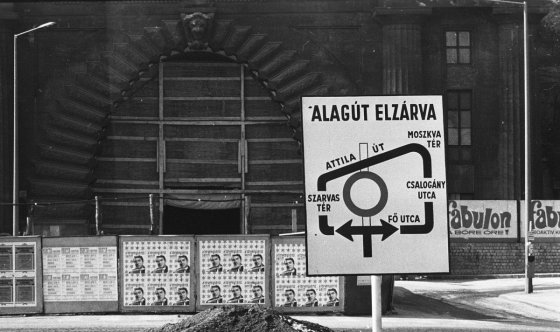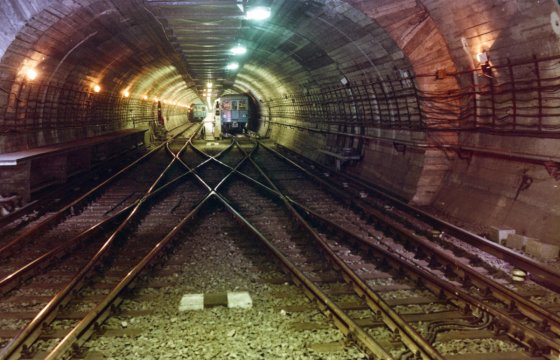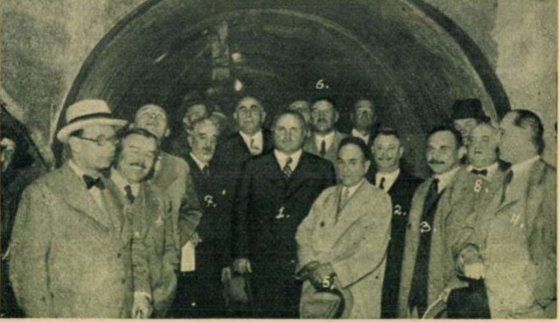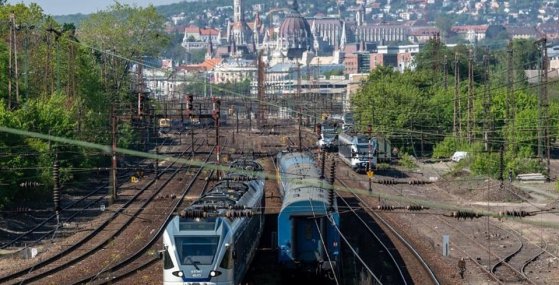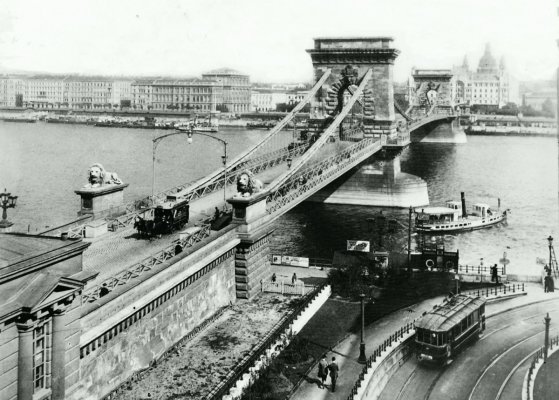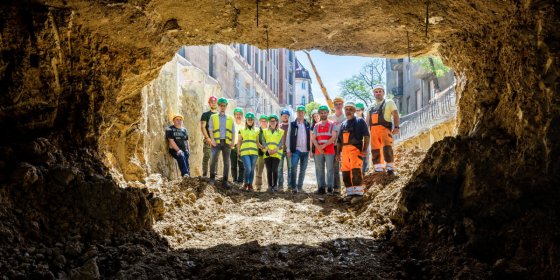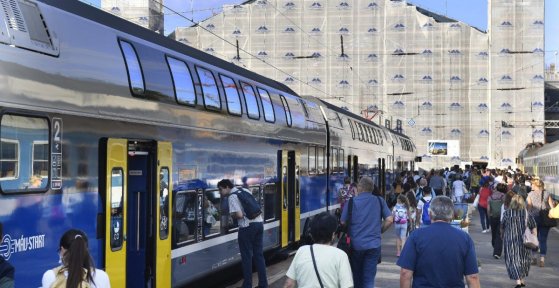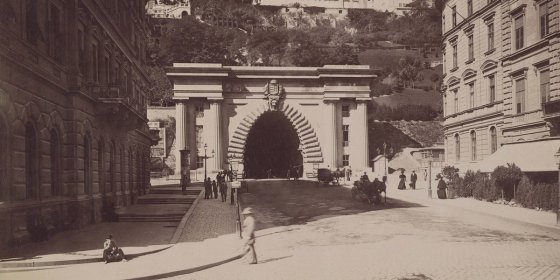 The „intertwined history” of the bridges and the city of Budapest
Which ideas and events have shaped the fate of bridges of Budapest and the cityscape? Alongside many other interesting facts, this question is also answered this newly published book by the Budapest City Archives, which introduces the history of bridges in Budapest.
The „intertwined history” of the bridges and the city of Budapest
Which ideas and events have shaped the fate of bridges of Budapest and the cityscape? Alongside many other interesting facts, this question is also answered this newly published book by the Budapest City Archives, which introduces the history of bridges in Budapest.
Tunnel
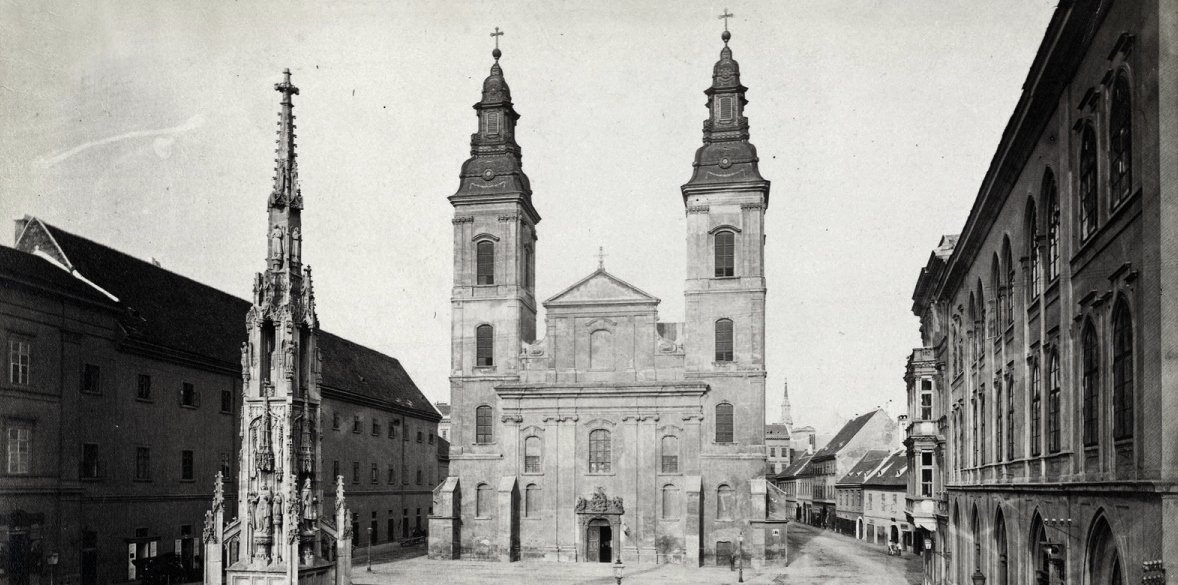 Tunnels instead of bridges? – An unrealised plan from the 19th century to connect Pest and Buda
Tunnels instead of bridges? – An unrealised plan from the 19th century to connect Pest and Buda
March 11, 2023 at 2:30 PM
The plan to build road tunnels under the Danube instead of bridges was seriously considered in Budapest already 130 years ago. Proponents argued that tunnels were cheaper, more sustainable and less militarily vulnerable. This idea was on the agenda for years, but the tunnels were not built in the end.
The renovation of the Buda Castle Tunnel began 50 years ago on the occasion of the 100th anniversary of the city unification
January 8, 2023 at 2:00 PM
The Buda Castle Tunnel is an important traffic route in Budapest and also an interesting technical monument. When it was handed over in 1857, it was part of the route leading to the only bridge at the time, and it has not lost its traffic importance even into the 21st century. Although it was designed for horse-drawn carriages, today it is used by cars. The current appearance of the passage took shape 50 years ago, the Tunnel was closed on 8 January 1973 due to the works.
Metro 2 was completed 50 years ago - Construction was started with spades and shovels
December 21, 2022 at 11:00 AM
Despite the fact that the first underground railway on the European mainland started in Budapest in 1896, the next underground railway section was completed in its entire length only fifty years ago, in December 1972. The construction lasted for more than twenty years and did not lack difficulties.
The drilling of the first tunnel under the Danube began 90 years ago
June 27, 2022 at 10:00 AM
It was an old dream to build a tunnel between Pest and Buda under the Danube, the idea already stirred the imagination of designers in the 19th century. But the first such construction took place only in the 1930s, namely on the northern border of Budapest, at the Szentendrei Island. This tunnel was not yet used for traffic, because water pipes were laid through it. Drilling began ninety years ago.
The contract has been signed, the railway tunnel under the Danube has taken another step closer to completion
February 17, 2022 at 6:30 PM
The railway tunnel connecting Kelenföld with the Western Railway Station by touching Széll Kálmán Square will be of paramount importance, as it will bring a leap forward development in the agglomeration, within Budapest and connecting the regions. However, the development will have a significant impact on the environment, which is why an environmental impact assessment study needs to be carried out, the contract for which has just been signed. In addition to surveying the soil, caves and springs, the study will also cover whether or not the dust and noise exposure of the population will increase.
The tram started on the Várkert Embankment 115 years ago
February 1, 2022 at 9:00 AM
The tramway at the Chain Bridge bypasses the Buda end of the bridge in a tunnel, under the ground. However, when it was built, the tramway was debated for 9 years by the Budapest City Council and the Budapest Public Works Council, it was difficult for them to decide whether to run the tram on the upper or lower embankment. In the end, the dispute was concluded, so 115 years ago, in 1907, trams could start south of the Chain Bridge.
A decades-old plan comes to life – A tunnel connecting Széll Kálmán Square with Városmajor
June 25, 2021 at 9:00 AM
The construction of the new pedestrian crossing connecting Széll Kálmán Square with the Postapalota (Postal Palace) and Városmajor started last autumn, the two ends of which met under Várfok Street almost a month ago. The tunnel, which is expected to be completed by the end of the year, will not only provide an unobstructed passage for pedestrians and cyclists in the area to Városmajor but will also create a new entrance to the former Postapalota, also known as the Buda Palace.
City of the Future – Railway development connects new areas to city centre
February 8, 2021 at 11:00 AM
What will Budapest look like in 20 years? According to current urban development efforts, the air will be much cleaner, the underground, suburban railways and rail services will be connected. Commuters will happily board clean, on-time and frequent trains to get to work from the outer parts of Budapest and towns in the agglomeration. Sixteen new railway stations will be built to support this purpose, while huge areas once used by the railway may be rehabilitated and handed over for residential use. At least this is what the newly completed Budapest Agglomeration Railway Strategy says.
A dream of the Reform Period – A tunnel to run through Castle Hill
January 5, 2021 at 3:00 PM
Even when building Chainbridge the builders knew, the Buda bridgehead is in the wrong place, a point which is difficult to reach with a cart or carriage. A solution was needed, but Castle Hill stood in the way. Eventually, a company was founded to break through the hill 175 years ago.
More articles
 The „intertwined history” of the bridges and the city of Budapest
Which ideas and events have shaped the fate of bridges of Budapest and the cityscape? Alongside many other interesting facts, this question is also answered this newly published book by the Budapest City Archives, which introduces the history of bridges in Budapest.
The „intertwined history” of the bridges and the city of Budapest
Which ideas and events have shaped the fate of bridges of Budapest and the cityscape? Alongside many other interesting facts, this question is also answered this newly published book by the Budapest City Archives, which introduces the history of bridges in Budapest.
 The Bridge Report, which brought a turning point in the history of Budapest
A travel report that changed the history of Pest and Buda, as well as Hungary. The little book contributed to the change of half a thousand years of legal customs and the implementation of an investment of unprecedented size and technical quality. This book was The Bridge Report [Hídjelentés in Hungarian].
The Bridge Report, which brought a turning point in the history of Budapest
A travel report that changed the history of Pest and Buda, as well as Hungary. The little book contributed to the change of half a thousand years of legal customs and the implementation of an investment of unprecedented size and technical quality. This book was The Bridge Report [Hídjelentés in Hungarian].
 Drama on the university wall - The heroic monument was planned 95 years ago
In the constant hustle and bustle of the Egyetem Square in Pest, the students may not even notice the monument that decorates the short section of wall between the church and the central building of ELTE. However, it commemorates their predecessors, the heroes who fought for their country in World War I, and those who heroically helped them. The first design of the dramatically collapsing soldier was born in 1928, ninety-five years ago.
Drama on the university wall - The heroic monument was planned 95 years ago
In the constant hustle and bustle of the Egyetem Square in Pest, the students may not even notice the monument that decorates the short section of wall between the church and the central building of ELTE. However, it commemorates their predecessors, the heroes who fought for their country in World War I, and those who heroically helped them. The first design of the dramatically collapsing soldier was born in 1928, ninety-five years ago.

